Bako National Park Step by Step
Posted by Ariane on Dec 16, 2013 in Countries, Malaysia | 4 comments
Summary: One of the best places to see wildlife in Sarawak is Bako National Park. The place is very easy to reach, the management is competent and the park is beautiful. Here is a step by step guide to how we visited Bako (including how to go there, what information you should have before you go and what to bring).
$1=RM (MYR) 3.21
How to Get to Bako National Park: Transportation
You can easily go to Bako National Park by yourself—you don’t need to take a tour.
You will need to take a couple of different modes of transport, but it’s an easy journey and will save you money. You will take:
1.Bus
2.Boat
Which Bus to Bako National Park?
You need to take bus number 1 from Kuching. Buses start from the main station in the main market. There are then several stops in Kuching, the most central being the one in front the Riverside Majestic Shopping Mall on the waterfront (you need to be on the side of the river).
The bus will take you to the village (Bako Market), where you’ll take the jetty. The first bus is at 7 am, and then they come every hour. You will recognize the bus easily as it is red and has a big illuminated sign saying “BAKO.” Be aware that buses often leave earlier than they should, so we advise that you arrive at least 15 minutes before departure time. The ride to the jetty takes around 45 minutes. The bus costs RM 3.50 pp. When you come back, the two last buses are at 4 pm and 5 pm, and we’ve been told that the 5 pm one is not very reliable.
Transferring by Boat
You need to be at the jetty before 9am, as there are no other boats in the morning (because of the tide I suppose), and you will have to wait until 2 pm for the next one. You pay RM 20 for the entrance to the NP before you take the boat, and they also check your reservation to see if you are staying overnight. The jetty costs RM 94 round-trip, so it is cheaper if you arrange to be a group of five people to share the boat fare, but you will need to leave the park all together at the same time because the same boat will bring you back (whether the same day or the following one). You have to agree with both the boat captain and your fellow co-passengers on what time you want to come back. We didn’t ask if we could pay only one way and we were not offered to do so. They charged us the RM 94 when we booked, but we were already five so it was ok. The boat trip to Bako National Park takes around 20 minutes.
There are two boats leaving in the morning at 8 am and 9 am and the rest start from 2 pm.
Bako National Park Welcoming Ceremonies
Upon your arrival you will be welcomed by the staff of the NP. They will give you a map of the park and tell you which trails are open. If you stay overnight, they give you towels and the keys to your room.
We weren’t only welcomed by the staff when we arrived the first day, but also by long tailed macaque monkeys, proboscis monkeys (the big nose one that everyone wants to see), wild boars and squirrels. But the next day they weren’t roaming around the park HQ, as usually nothing can be taken for granted with wild animals.
The park is gorgeous. There are no less than 16 trails to explore, ranging from half an hour to seven hours trekking, so you need to make sure to be back before it gets dark if you choose a long trail. Also, make sure you have enough water with you.
Where to Spot the Different Wildlife Species in Bako National Park
In Bako you will definitely find the macaque monkey and the wild boars. The proboscis monkeys are more shy, but you won’t miss them. If you want to see a wider range of animals, we advise that you hire a guide, as they have good eyes and they know where the animals are. We passed not less than three times just 20 inches from a lemur hanging in a tree without seeing it before one of the guides told us where it was! There are plenty of insects, of course, and we saw a small turtle and a big spider. There are other animals that we didn’t see such as monitor lizards and wild cats, but wild animals are not to be found as easily as cows in a Norman field!
We were lucky and managed to see most of the wildlife in the park, including a snake, two types of freshwater turtles, monkeys, boars and lots of insects—and all without hiring a guide! But again, we were lucky.
We were even more lucky and Bassel was bitten by fire ants, which, according to him, is AWESOME! That was during our night trip with loads of people and few guides.
Is it worth it to spend a night in Bako National Park?
Prices for accommodation in Bako NP vary from RM 15 pp to RM 159 per chalet. There are not a lot of chalets and lodges, so it is best to book in advance, especially during weekends. Some lodges are made of wood, but the most recently made rooms are made of concrete.
It worth every penny to spend a night or more if you can afford it. The park is very rich in wildlife, and spending time to find them or just sit and observe them will take some time.
Food and drinks
There is only one canteen in Bako, so you won’t have to think a lot about where or what to eat. They offer nice local dishes at very reasonable prices (RM 8 per dish). You will find both vegetarian and non-vegetarian food, tea, coffee, sodas, cookies, cakes and even fruits.
What to bring
The usual equipment:
●Sleeping bag.
●Towels (depending on which accommodation you’ve chosen, you may or may not get towels—check ahead!)
●Sunblock.
●Hat.
●Swimming suit (during the dry season mainly because during the rainy season the sea is
not very clear and pleasant to swim in).
●Good walking shoes.
●Rain equipment.
●A torch for the night trekking if you choose to do it.
●Insect repellent.
●Soap and shampoo.
●Your camera (don’t forget to charge your battery), as you will take hundreds of photos.
Save the wildlife and be part of the movement
It turns out that a lot of visitors and some guides try to feed the animals to get a closer look, or to bring them out. Bako National Park is not a zoo and we shouldn’t encourage the act of feeding the wild animals to turn them into pets.
●Don’t feed them (we see that a lot) and speak up if someone tries to.
●Don’t touch them or try to touch them, and speak with your guide if he tries.
●Try not to bother them too much (flash photos disturb night animals).
●Beware of long tailed macaques, which are very naughty and just get mad when they see a plastic bag or any kind of food you’re carrying. They even jump on tables at the canteen to steal food.
Bako National Park was one of the best attractions for us in Kuching.

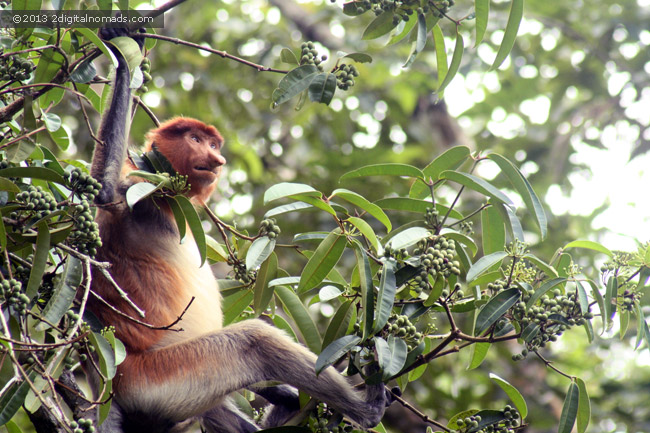

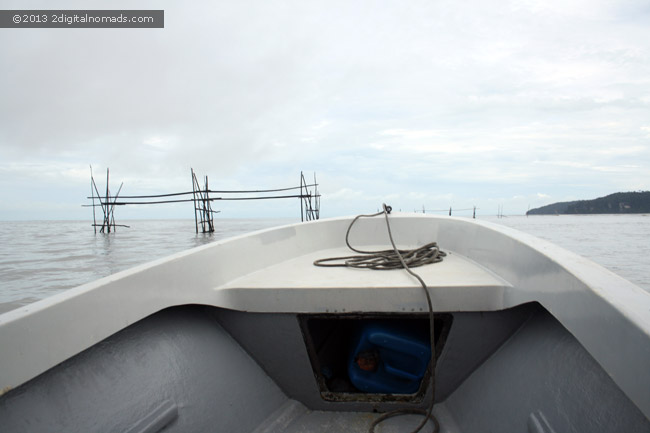
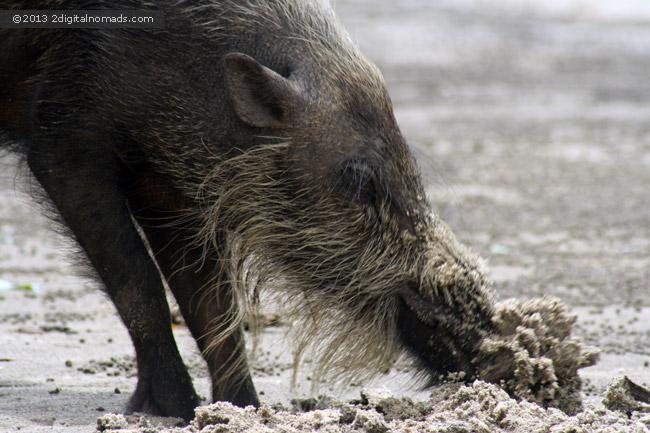
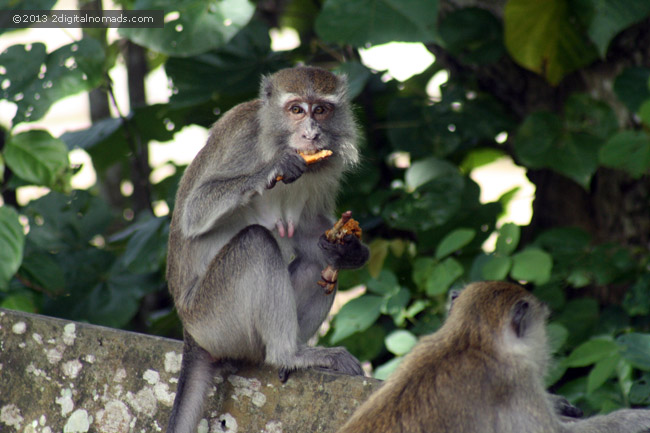

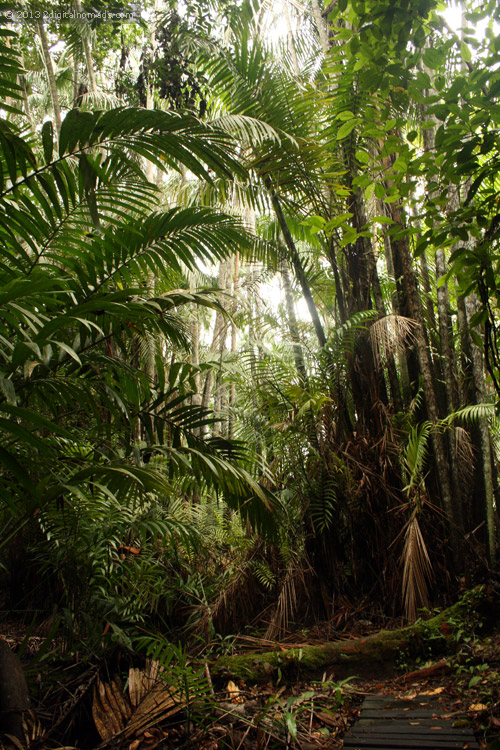
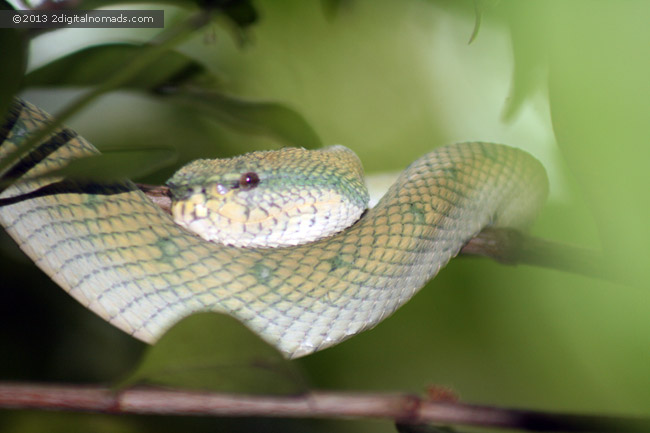
 Bassel & Ariane, a couple who quit their jobs to realize their dream "traveling around the world". This travel website is our way to share with you the amazing adventures we have had, with the goal of helping to make your own travels more enjoyable.
Bassel & Ariane, a couple who quit their jobs to realize their dream "traveling around the world". This travel website is our way to share with you the amazing adventures we have had, with the goal of helping to make your own travels more enjoyable.
what would u recommend. stay there for 1 night or 2 night. i travel to taman negara pahang for 3 day 2 night.
We believe longer is better but it depends on what you want to do/achieve. If you love wildlife and watching animals in their natural habitat then a 2 days would be better! For us it was a matter of budget rather than time, if we had the resources we would’ve stayed longer.
Hi, thanks for your story! I have two questions:
1- is it easy/possible to track with a child of 2,5 y.o.? We have the back sitter so we can carry him but we need to make often stops to swim and relax on the way.
2- should we arrange a guide in advance (if so how?) or can we do it upon arrival to the NP?
Thanks in advance!
Glad you liked it!
1- We can’t say if it will be easy or not with a baby, but we were accompanied by a mother and her two 12ish kids who were running across the path as it was a paved road! There is a lot of wildlife around the HQ than on tracks. Also, plan your visit to arrive in a good time if you want to do swimming. Call the national park, they are very helpful.
2- We didn’t hire a guide for our journey and so our companion mom/kids. So, we’re not sure of the process but this post ‘check @mysarawak’ @tripadvisor explains the situation at the park Guides in Bako National Park.
Safe travel!